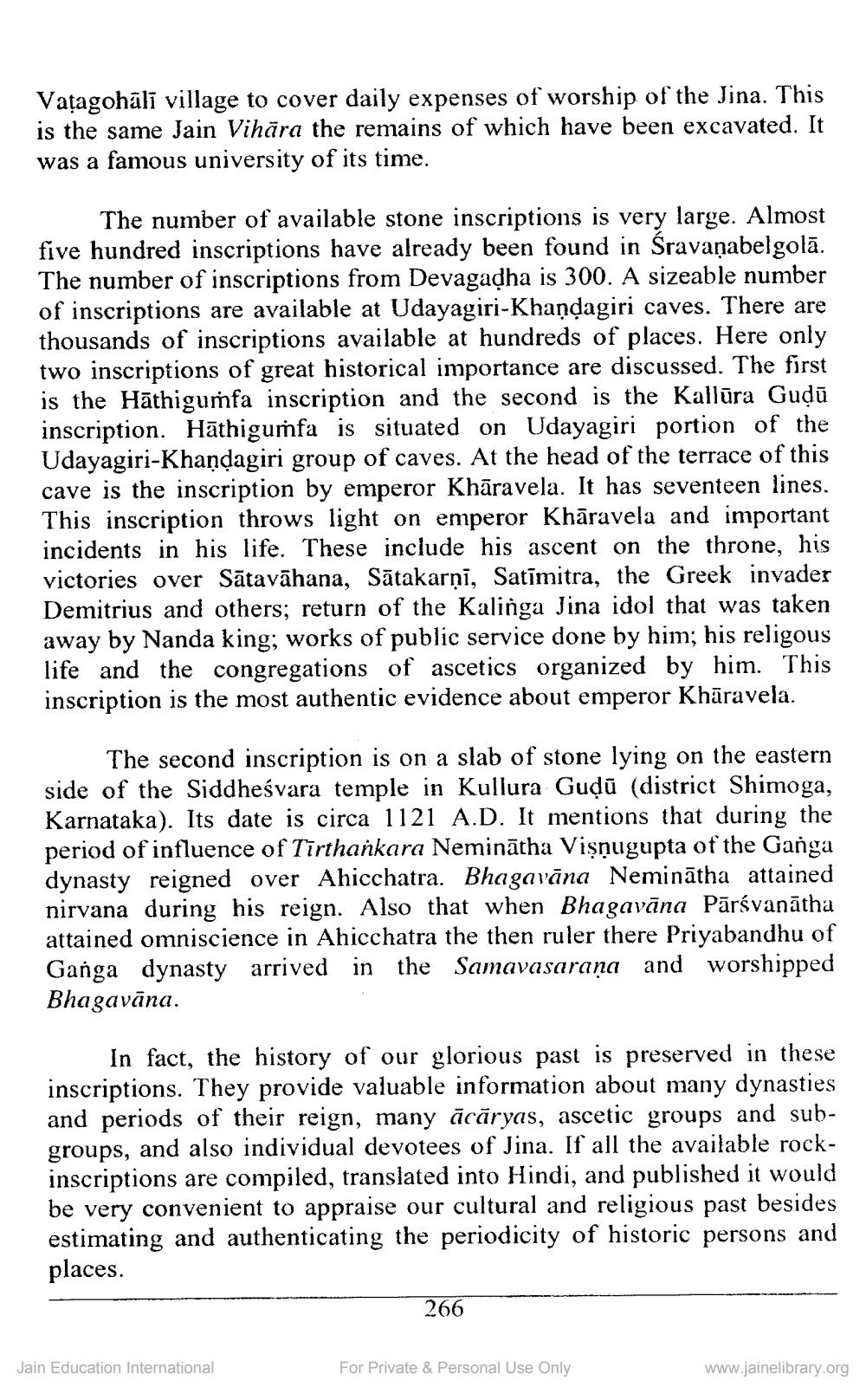________________
Vatagohālī village to cover daily expenses of worship of the Jina. This is the same Jain Vihāra the remains of which have been excavated. It was a famous university of its time.
The number of available stone inscriptions is very large. Almost five hundred inscriptions have already been found in Śravanabelgolā. The number of inscriptions from Devagadha is 300. A sizeable number of inscriptions are available at Udayagiri-Khandagiri caves. There are thousands of inscriptions available at hundreds of places. Here only two inscriptions of great historical importance are discussed. The first is the Hāthiguṁfa inscription and the second is the Kallūra Gudū inscription. Hāthigurfa is situated on Udayagiri portion of the Udayagiri-Khandagiri group of caves. At the head of the terrace of this cave is the inscription by emperor Khāravela. It has seventeen lines. This inscription throws light on emperor Khāravela and important incidents in his life. These include his ascent on the throne, his victories over Sātavāhana, Sātakarņi, Satīmitra, the Greek invader Demitrius and others; return of the Kalinga Jina idol that was taken away by Nanda king; works of public service done by him; his religous life and the congregations of ascetics organized by him. This inscription is the most authentic evidence about emperor Khāravela.
The second inscription is on a slab of stone lying on the eastern side of the Siddheśvara temple in Kullura Gudū (district Shimoga, Karnataka). Its date is circa 1121 A.D. It mentions that during the period of influence of Tirthankara Neminātha Vişnugupta of the Ganga dynasty reigned over Ahicchatra. Bhagavāna Neminātha attained nirvana during his reign. Also that when Bhagavāna Pārsvanātha attained omniscience in Ahicchatra the then ruler there Priyabandhu of Ganga dynasty arrived in the Samavasarana and worshipped Bhagavāna.
In fact, the history of our glorious past is preserved in these inscriptions. They provide valuable information about many dynasties and periods of their reign, many ācāryas, ascetic groups and subgroups, and also individual devotees of Jina. If all the available rockinscriptions are compiled, translated into Hindi, and published it would be very convenient to appraise our cultural and religious past besides estimating and authenticating the periodicity of historic persons and places.
266
Jain Education International
For Private & Personal Use Only
www.jainelibrary.org




